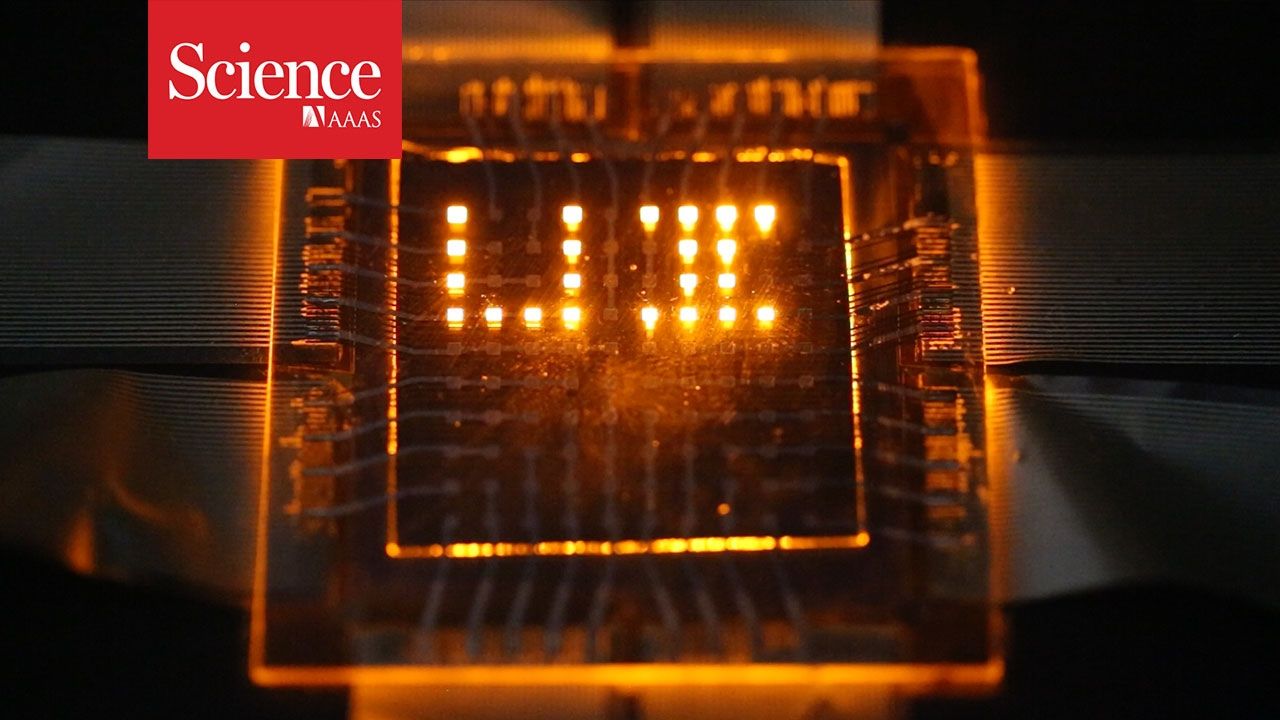Archive for the ‘mobile phones’ category: Page 195
Feb 11, 2017
Value Conflicts surrounding the Meaning of Life in the Trans/Post/Human Future
Posted by Steve Fuller in categories: biological, cryonics, cyborgs, economics, environmental, ethics, futurism, governance, health, homo sapiens, law, mobile phones, policy, posthumanism, security, theory, transhumanism
Posthumanists and perhaps especially transhumanists tend to downplay the value conflicts that are likely to emerge in the wake of a rapidly changing technoscientific landscape. What follows are six questions and scenarios that are designed to focus thinking by drawing together several tendencies that are not normally related to each other but which nevertheless provide the basis for future value conflicts.
- Will ecological thinking eventuate in an instrumentalization of life? Generally speaking, biology – especially when a nervous system is involved — is more energy efficient when it comes to storing, accessing and processing information than even the best silicon-based computers. While we still don’t quite know why this is the case, we are nevertheless acquiring greater powers of ‘informing’ biological processes through strategic interventions, ranging from correcting ‘genetic errors’ to growing purpose-made organs, including neurons, from stem-cells. In that case, might we not ‘grow’ some organs to function in largely the same capacity as silicon-based computers – especially if it helps to reduce the overall burden that human activity places on the planet? (E.g. the brains in the vats in the film The Minority Report which engage in the precognition of crime.) In other words, this new ‘instrumentalization of life’ may be the most environmentally friendly way to prolong our own survival. But is this a good enough reason? Would these specially created organic thought-beings require legal protection or even rights? The environmental movement has been, generally speaking, against the multiplication of artificial life forms (e.g. the controversies surrounding genetically modified organisms), but in this scenario these life forms would potentially provide a means to achieve ecologically friendly goals.
- Will concerns for social justice force us to enhance animals? We are becoming more capable of recognizing and decoding animal thoughts and feelings, a fact which has helped to bolster those concerned with animal welfare, not to mention ‘animal rights’. At the same time, we are also developing prosthetic devices (of the sort already worn by Steven Hawking) which can enhance the powers of disabled humans so their thoughts and feelings are can be communicated to a wider audience and hence enable them to participate in society more effectively. Might we not wish to apply similar prosthetics to animals – and perhaps even ourselves — in order to facilitate the transaction of thoughts and feelings between humans and animals? This proposal might aim ultimately to secure some mutually agreeable ‘social contract’, whereby animals are incorporated more explicitly in the human life-world — not as merely wards but as something closer to citizens. (See, e.g., Donaldson and Kymlicka’s Zoopolis.) However, would this set of policy initiatives constitute a violation of the animals’ species integrity and simply be a more insidious form of human domination?
Continue reading “Value Conflicts surrounding the Meaning of Life in the Trans/Post/Human Future” »
Tags: animals, children, Death, energy, longevity, meaning of life, Neuroscience, politics, poverty, values
Feb 9, 2017
Nanorods Emit and Detect Light, Could Lead to Displays That Communicate via Li-Fi
Posted by Karen Hurst in categories: mobile phones, nanotechnology

I don’t know how to say this; however, Apple has already shared their own experiment Li-Fi over a year ago; now this from IEEE.
Now an advance by a team of researchers from the University of Illinois at Urbana–Champaign, the Electronics and Telecommunications Research Institute in South Korea and Dow Chemical may turn the display market on its head by eliminating the need for backlights in LCD devices. They have produced a LED pixel out of nanorods capable of both emitting and detecting light.
Feb 9, 2017
Apple Patent Reveals Breakthrough Quantum Tunneling Touch-Sensitive Materials for iPhone, Smart Cases & More
Posted by Karen Hurst in categories: mobile phones, quantum physics
Well, I asked about Apple’s own investment in QC; we now have our answer.
Today the US Patent & Trademark Office published a patent application from Apple that reveals a new breakthrough material described as deformable touch-sensitive quantum tunneling material. It could be used in a smart iPhone case allowing for touch zones on the back of the case to control your iPhone. More importantly, it could be used as a material for making the iPhone itself. The use of this material would virtually eliminate bulky physical buttons forever making the iPhone near waterproof perfect and slick to the touch. The material could extend to a new smart Apple Watch band. Smart Apple Watch Bands have been on Apple’s mind for some time now as we’ve covered a number of interesting patent ideas like smart links, chameleonic bands with 3D touch and cooling and, easy recharging with a MacBook. Yet the use of quantum tunneling material in a band would allow for touch controls without seeing any buttons.
This could also apply to accessories like future EarPods to eliminate the bulky remote and much more. This breakthrough material will eventually provide Jony Ive’s industrial design team with new ways to streamline designs and finally eliminate physical buttons of any kind while allowing device designs to be even thinner.
Feb 9, 2017
RadioBio: What role does electromagnetic signaling have in biological systems?
Posted by Karen Hurst in categories: augmented reality, health, military, mobile phones, quantum physics, robotics/AI, wearables
Many have asked me what does this DARPA announcement on their project (RadioBio) mean. Well, imagine a world in the next 10 to 15 years where you no longer need any devices (no smartphone, no AR contacts, no smartwatch, no wearables, no external BMIs or invasive implants, etc.) of any kind as Quantum Bio technology uses (in DARPA’s case) connected cell technology to connect people to people and information online (private and publically available. This approach is the least invasive method of turning cells into connected technology.
Military will mean no more lugging of devices and certain types of equipment around on the battlefield plus lower risk of stolen intelligence as no device or equipment left behind or stolen.
What does it mean to consumers? Means no more losing phones and other devices as well as broken down equipment be replaced every 2years and no more insurance and extra-warranty payments for devices; and no more devices stolen with your information on it. And, it means my doctors and body (AI and non-AI methods) can monitor my health and activate pain relief, etc. through biosystem treatments such as pain can be suppressed via the readings or before the pain is felt. It also empowers the immune system to proactively prevent diseases as the biosystem technology will monitor and treat as needed.
Feb 9, 2017
Apple Invents Flexible Displays and Electronics to Work with Future iDevices, Clothing, Smart Windows & more
Posted by Klaus Baldauf in categories: biotech/medical, mobile phones
Patently Apple’s other blog called Patently Mobile has covered the advances of flexible displays from Samsung for years. You could check out some of the major ones here: (one, two, three and four. The most interesting ones relate to a possible scrollable smart device. Today the US Patent & Trademark Office published a patent application from Apple that reveals their work on flexible displays and electronics that will extend to specialty applications. Beyond applying their revealed technology to known devices such as a smartphone or tablet, Apple see’s the technology being widely adopted into smart clothing, smart windows, applications in vehicles, furniture and more. One of the inventors on the patent previously worked for a company where they made flexible medical devices, skin-mounted epidermal electronics and even next gen flexible processors. So this is a serious invention that is likely to work through the system over time and eventually to market. It’s not just pie in the sky thinking.
Traditional displays and touch sensors mounted in a device may be subject to stress-induced failures. As devices with flexible displays are being considered for the future, Apple has to invent new and improved input-output methodologies to accommodate such displays.
Apple notes that their invention relates to a flexible input-output device such as a display or a display with integrated sensors and haptic output may be formed from an elastomeric substrate layer.
Feb 5, 2017
Judge Rules That Unlocking Cellphones via Fingerprint Does Not Violate Constitutional Rights
Posted by Karen Hurst in categories: mobile phones, privacy
Wow — hope that folks at Apple, Samsung, Motorola, etc. see this.
In response to an incident that lacked any relation to the last fingerprint-related news, a Minnesota court ruled against a recent Fifth Amendment appeal regarding device passwords. The Minnesota Court of Appeals ruled that ordering an individual to unlock a device with a fingerprint “is no more testimonial than furnishing a blood sample, providing handwriting or voice exemplars, standing in a lineup, or wearing particular clothing.”
The case in question involved Matthew Vaughn Diamond, a man Carver County District Court found guilty in 2015 of burglary and theft, among other crimes. Other news outlets cite arrest records from far before 2015, but the records showed no relevance to the January 2017 ruling. The Carver County District Court fought Diamond over his phone’s contents—he locked the phone with a fingerprint and refused to unlock the phone for the court. He argued, initially, that forcing his fingerprint violated both his Fourth and Fifth Amendment rights. However, the Minnesota Court of Appeals heard only the Fifth Amendment appeal.
Feb 3, 2017
Sensor Technology Delivers Enhancements to Homeland Security
Posted by Karen Hurst in categories: mobile phones, security
Definitely q-dots/ graphene technology involved.
Smartphones are about to get a lot smarter, thanks to rapid advances in sensor technology, which is set to hugely impact homeland security.
Feb 3, 2017
Scientists Have Turned Cooking Oil Into a Material 200 Times Stronger Than Steel
Posted by Karen Hurst in categories: mobile phones, nanotechnology, particle physics, solar power, sustainability
Graphene cooking oil?
In Brief
- Researchers have discovered a way to make soybean oil into the super-strong material graphene. The material has a wide variety of potential uses and can revolutionize electronics.
- The material could be used to make cell phone batteries last 25 percent longer, make more effective solar cells, and even filter fuel out of air.
Researchers have found a way to turn cheap, everyday cooking oil into the wonder material graphene – a technique that could greatly reduce the cost of making the much-touted nanomaterial.
Feb 2, 2017
A Smorgasbord of Tiny Switches fit for Consumer Devices
Posted by Karen Hurst in categories: electronics, mobile phones
Judging by the way some users handle portable consumer electronics, it’s fair to say that they can be considered harsh environment devices. Cell phones, MP3 players, tablets and other portable electronic devices have become ubiquitous personal and professional tools that are used constantly throughout the day and not with the gentlest of care. As a result, switch manufacturers must create new rugged miniature switches that combine significant space and weight reductions with ruggedness and long operating lives.
These miniature switches must function in the same reliable, consistent manner as the more substantially-sized industrial design, all the while maintaining optimum functionality, performance and extended lifespans. Switch manufacturers that offer value-added services, including manufacturing modules and custom assemblies, can deliver complete electromechanical solutions that not only meet the size and performance requirements, but can also withstand the elements like vibration and shock.















